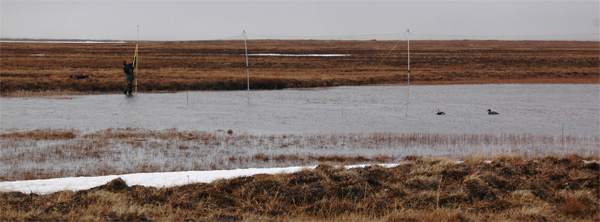
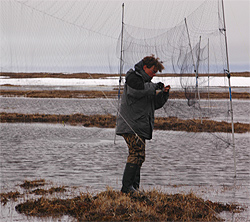
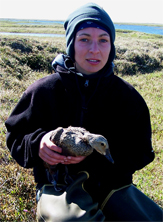
SATELLITE TELEMETRY
How we track King Eiders with satellite transmitters
Adult King Eiders are trapped on their breeding grounds in early June. In 2006, juveniles are caught after the breeding season before they are fully able to fly. We generally catch birds using a mist net array in a shallow pond frequented by King Eiders, and attract the ducks with plastic decoys to the net. King Eiders are heavy and have relatively small wings, so they have only limited maneuverability. A duck lured in by the decoys will often see the net too late to avoid it. Once the duck hits the net the field crew removes it and takes it to a tent where the surgery is carried out.



Captured eiders are weighed and measurements such as wing chord, bill length, and tarsus length are taken before the eiders are anesthetized for surgery.
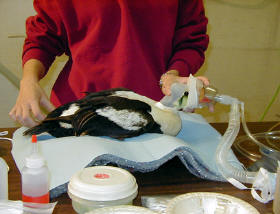 |
King Eiders are anesthetized using isoflourine. The anesthesia will last approximately 35 minutes, and heart rate, body temperature, and breathing are monitored throughout the surgery . |
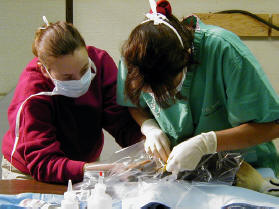 |
The veterinarian then makes an incision into the abdomen of the duck and inserts the satellite transmitter into the abdominal cavity of the bird. A little hole is created on the back for the transmitter's antenna. |
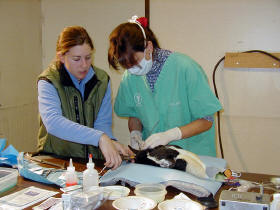 |
The incisions are sewn back together and surgical glue is placed over the incision sites to help protect the sutures. The incision process and transmitter implantation takes a trained veterinarian only 10-15 minutes to complete. |
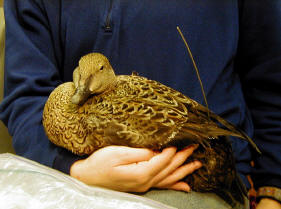 |
Shortly after the transmitter has been inserted the isoflourine is turned off and the King Eiders are allowed to wake up. They will be held for 1-2 hours after surgery for monitoring and recovery before being released. |
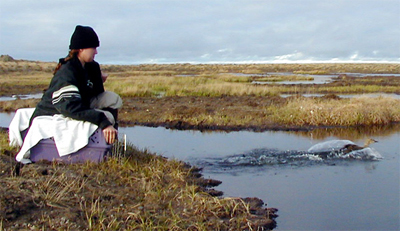 |
After two hours of recovery most ducks are perky again and are released at the site where they were captured. |
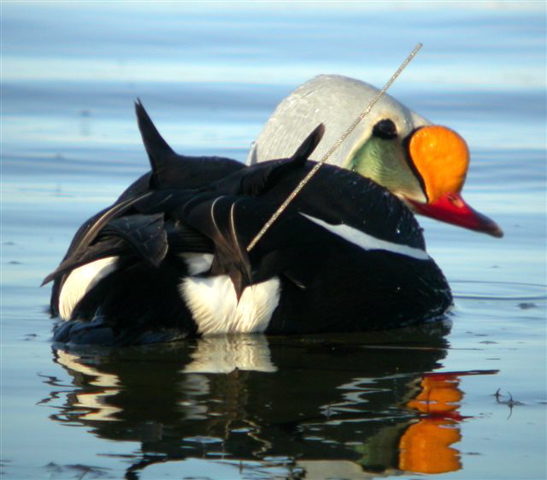 |
Implanted satellite transmitters begin sending signals immediately. The satellites can be programmed to send signals daily or in other regular intervals. The larger the time interval between transmissions, the longer the battery lasts. Hence, it is possible to make a transmitter last 16 months when it only transmits once a week, whereas the battery lasts only a few months when it transmits continuously. The data can be downloaded from a website and processed in a Geographic Information System (GIS). The locations of ducks are plotted on a map, and can then be related to other available data, such as weather patterns, ice cover, or plankton availability |